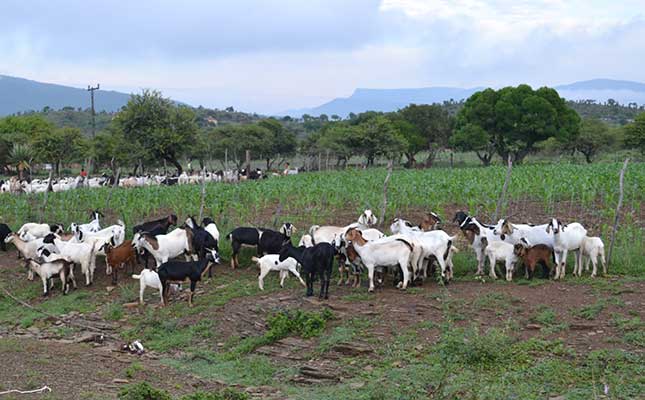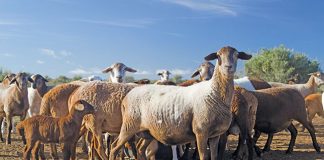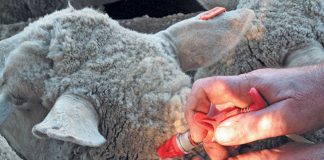
Photo: FW Archive
Parasites can cause serious diseases in livestock, resulting in devastating financial losses. In addition to visible parasites such as ticks, there are internal parasites such as worms, liver fluke and nasal bots, which can lead to a weakened immune system that allows opportunistic infections to enter the body. Parasites such as wireworm are even potentially deadly.
READ A basic checklist to keep sheep healthy and productive
In many communal farming areas, the problem starts with a lack of grazing management. This results in overgrazing, which means the animals don’t receive enough nutrition and end up with compromised immune systems. This, in turn, makes them more vulnerable to the effects of parasite infestation.
Many parasite challenges and livestock health issues can be addressed by implementing effective grazing management programmes.
No treatment
Another ongoing problem in many communities that farm together on the same land is that only some of the farmers implement animal-health protocols such as vaccination and deworming. This opens up an opportunity for diseases and parasites to spread quickly.
Some farmers, for instance, take the trouble to inject their sheep against scab, while others fail to treat their animals at all or even to report an outbreak.
READ Why vaccines are so important for your animals
Yet another problem is that some farmers fail to give a follow-up injection where this is required. For example, a suspected outbreak of scab or itch mite (both devastating conditions for wool growers) needs to be controlled with an injectable antiparasitic, followed by a second injection seven days later to eradicate new mites that were in the egg stage when the first injection was given. In addition, the suspected presence of the disease needs to be reported immediately.
In short, the community needs to be proactive. If anyone sees any sheep with loose or scraggy wool, or pulling/biting their wool excessively, or rubbing themselves against trees or other objects, the entire communal flock should be injected.
At the same time, someone needs to notify the local state veterinarian or extension officer. Community structures should be put in place to handle these important animal-health protocols.
A similar situation arises with the oral deworming of livestock: while some farmers deworm their animals when they see physical signs of infestation such as anaemia (white rather than pink inner eyelids), diarrhoea, bottle jaw (swelling in the throat or lower jaw area), coughing, congested nostrils, or swollen stomachs in lambs (a sign of tapeworm), other farmers simply don’t bother.
The result is that the animals that have been dosed (and are now clear of internal parasites) often get reinfected. Again, community organisations can address such problems.
The essentials
The following are essential aspects to consider when administering treatment for parasites:
Use effective antiparasitic remedies
For example, make sure the dose or drench used for liver fluke or nasal bots contains the active ingredients that can control these parasites.
Avoid repeating the same remedy
If you use medication with the same active ingredient season after season, parasites will build up resistance to it. It’s crucial to vary the remedy after every season or two. When buying doses, ask about remedies with different active ingredients. The same applies to dips for controlling ectoparasites; vary the dip you use to control parasites such as ticks.
Follow up
When a manufacturer advises a follow-up treatment, be sure to adhere to this instruction.
Quarantine livestock after treatment
After deworming, for instance, the animals should stay in the same area for 10 to 14 days before being moved to a clean area. This will help to break the reinfection cycle. In addition, keep sickly or heavily parasite-infested animals away from healthy animals for 10 to 14 days after treatment.
Use a dedicated area with sufficient feed and water for this purpose. But ultimately, the easiest and cheapest remedy for most livestock farming problems is to have well-managed grasslands. These provide plenty of nutrition for your livestock, keeping them healthy and well-fed.
Shane Brody is involved in an outreach programme aimed at transferring skills to communal farmers.











